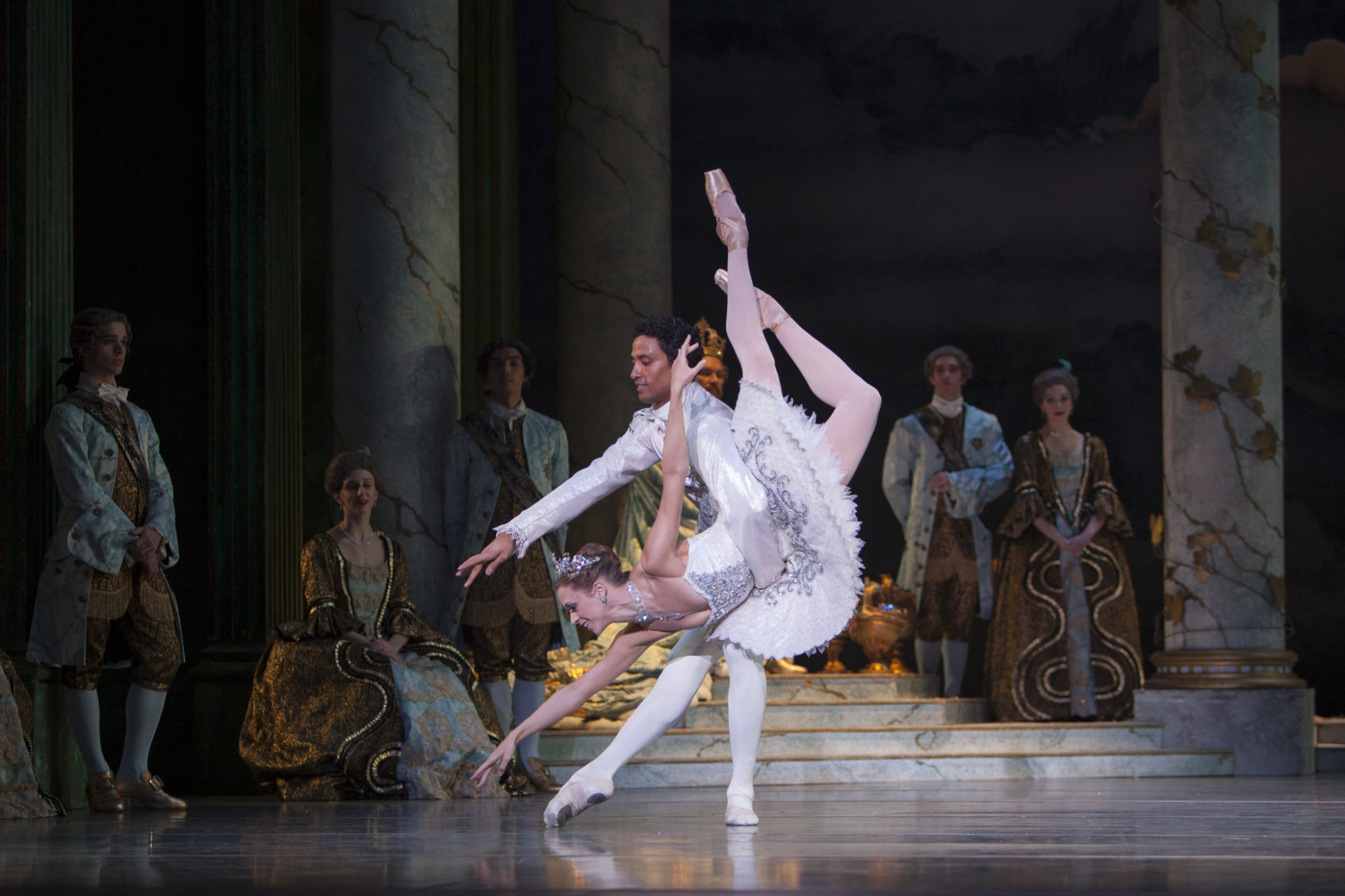
I’ve said before that PNB’s lecture series, Ballet 101, feels more like Ballet 305. At the most recent lecture on January 19, PNB Audience Education Manager Doug Fullington, aided by dancers from the PNB School professional division, spent two hours dissecting the fairy variations from the prologue to Marius Petipa’s classic ballet, The Sleeping Beauty. Even as I was a little bit overwhelmed by all the depth and detail, it felt like he just scratched the surface.
What We Saw
This season, Pacific Northwest Ballet is performing The Sleeping Beauty. This production of The Sleeping Beauty is by English choreographer Ronald Hynd. He based it on the historic Royal Ballet version, which was closely based on the original Sleeping Beauty by Marius Petipa that premiered in 1890 in St. Petersburg, Russia. Even though PNB’s version is about as traditional as any you will find today, much has changed in the 130ish years since the premiere.
{This video is not from the Ballet 101 presentation, but gives a bit of the feel of it.}
The Ballet 101 presentation, Ballet Classics: The Sleeping Beauty, examined the prologue scene of Petipa’s ballet as the original audiences (probably) would have seen it in 1890. I say probably because the variations we saw at the Phelps Center rehearsal studio were based on the choreographic notation in which the ballet was recorded. The notation didn’t always include details like hand position or final poses, so Fullington had to do a bit of forensic reconstruction.
Artist’s Intent
By going through the prologue in this way, Fullington was able to illustrate a lot of what makes Petipa’s choreography so foundational to modern ballet. The fairy godmothers’ solos are “a study in symbolism, structure, musicality, and pointe work” so they make a perfect curriculum for modern audiences to understand how each of those things worked in a classic ballet like Sleeping Beauty.
Our handout for the class included the original libretto (translated of course) for the scene and excerpts from academic sources, as well as costume sketches and photographs of the original cast. We learned about the possible meanings of the fairies’ gifts – some of which are obscure – as well as the way their movements convey those meanings. I also learned about Petipa’s “academic” style, which, like French cooking, sometimes seems more notable for how systematic it is than for its aesthetic value.

Pacific Northwest Ballet company dancers in Ronald Hynd’s The Sleeping Beauty.
Photo © Angela Sterling c/o PNB.
We also learned about the ways ballet staging has changed since Petipa’s day. Fullington talked about how old ballets had lots of processionals to show off the costumes. These would have been riotous in color and variation in contrast to today’s more thematic presentations. Back in the day, the stage would have been cluttered with people standing around in those costumes, which left less room for the actual dancing. So, although the solos were extremely technical, they also took up less space than modern dances, which tend to use the whole stage.
Progressing the Art
Seeing the variations as they were originally performed will also provide some contrast when we watch the actual production. Petipa’s academic style may provide the ultimate challenge in technique for the dancer, but it also poses a bit of a challenge for the viewer (especially us modern viewers) for whom watching dancers perform a step on both sides and from all angles is akin to listening to a brilliant musician practice scales. Blame Michael Bay, but we want a bit more action these days.
Even if we didn’t, it is the nature of dance to evolve a tiny bit with each production – indeed, every performance is slightly different. Informed by Ballet 101, now I can occupy myself during those interminable processionals by noting the way modern dancers emphasize lines instead of angles, as they did in Petipa’s day. I can look for the way that early ballets privileged speed in contrast to the modern preference for a lifted leg or sharper shape that takes more time to achieve.
It’s not quite like watching a timeline unfold. It’s more like a then-and-now comparison, a sort of Instagram #100YearChallenge. When I see the actual production, I will know what has changed, and I’ll be able to say with certainty which era’s style I prefer.
The Fine Print
Pacific Northwest Ballet is performing The Sleeping Beauty February 1-10. Running time is approximately three hours, including three intermissions.
Tickets may be purchased online. Subject to availability, tickets are also available 90 minutes prior to each performance at McCaw Hall – these “at the door” tickets are half-price for students and seniors; $5 for TeenTix members. If you are between ages 20-40, sign up for ThePointe to receive discounts.
{I attended Ballet 101: The Sleeping Beauty courtesy of Pacific Northwest Ballet.}
The Fun Print
New York City Ballet (where current Artistic Director Peter Boal and the founding directors as well have their roots) is also performing The Sleeping Beauty in February this year. They made a fun promotional campaign for it.




About the author